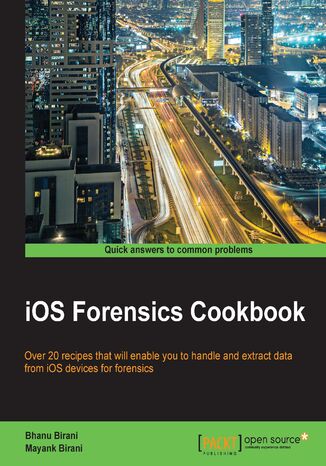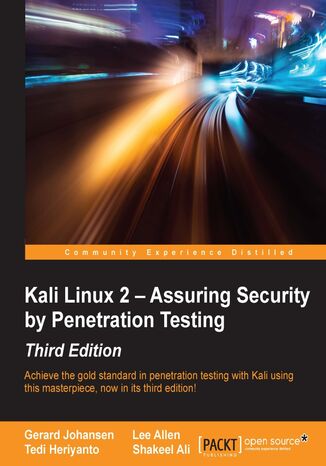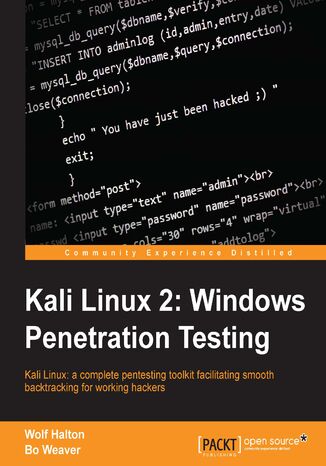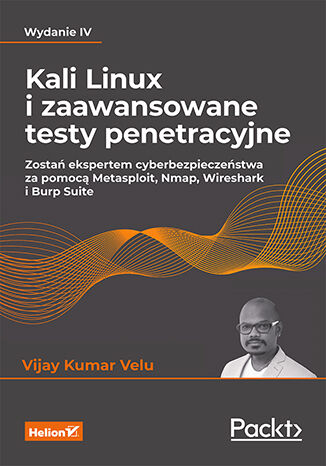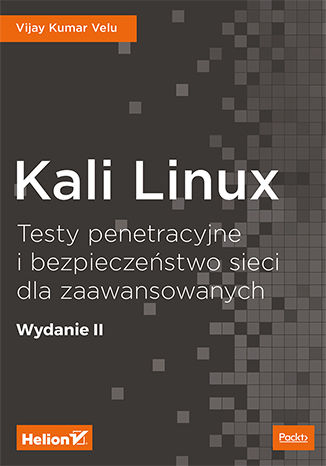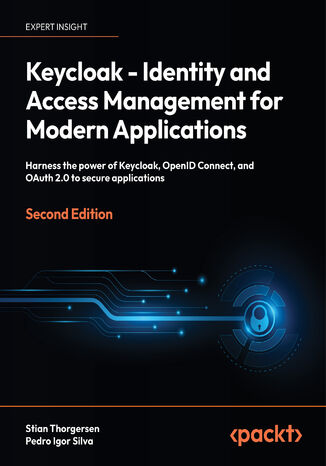Kategorien
E-Books
-
Wirtschaft
- Bitcoin
- Geschäftsfrau
- Coaching
- Controlling
- E-Business
- Ökonomie
- Finanzen
- Börse und Investitionen
- Persönliche Kompetenzen
- Computer im Büro
- Kommunikation und Verhandlungen
- Kleines Unternehmen
- Marketing
- Motivation
- Multimedia-Training
- Immobilien
- Überzeugung und NLP
- Steuern
- Sozialpolitik
- Handbȕcher
- Präsentationen
- Führung
- Public Relation
- Berichte, Analysen
- Geheimnis
- Social Media
- Verkauf
- Start-up
- Ihre Karriere
- Management
- Projektmanagement
- Personal (HR)
-
Für Kinder
-
Für Jugendliche
-
Bildung
-
Enzyklopädien, Wörterbücher
-
E-Presse
- Architektura i wnętrza
- Sicherheit und Gesundheit am Arbeitsplatz
- Biznes i Ekonomia
- Haus und Garten
- E-Business
- Ekonomia i finanse
- Esoterik
- Finanzen
- Persönliche Finanzen
- Unternehmen
- Fotografie
- Informatik
- HR und Gehaltsabrechnung
- Frauen
- Computer, Excel
- Buchhaltung
- Kultur und Literatur
- Wissenschaftlich und akademisch
- Umweltschutz
- meinungsbildend
- Bildung
- Steuern
- Reisen
- Psychologie
- Religion
- Landwirtschaft
- Buch- und Pressemarkt
- Transport und Spedition
- Gesundheit und Schönheit
-
Geschichte
-
Informatik
- Office-Programme
- Datenbank
- Bioinformatik
- IT Branche
- CAD/CAM
- Digital Lifestyle
- DTP
- Elektronik
- Digitale Fotografie
- Computergrafik
- Spiele
- Hacking
- Hardware
- IT w ekonomii
- Wissenschaftliche Pakete
- Schulbücher
- Computergrundlagen
- Programmierung
- Mobile-Programmierung
- Internet-Server
- Computernetzwerke
- Start-up
- Betriebssysteme
- Künstliche Inteligenz
- Technik für Kinder
- Webmaster
-
Andere
-
Fremdsprachen lernen
-
Kultur und Kunst
-
Lektüre
-
Literatur
- Anthologien
- Ballade
- Biografien und Autobiografien
- Für Erwachsene
- Drama
- Tagebücher, Memoiren, Briefe
- Epos
- Essay
- Science Fiction
- Felietonys
- Fiktion
- Humor, Satire
- Andere
- Klassisch
- Krimi
- Sachbücher
- Belletristik
- Mity i legendy
- Nobelpreisträger
- Kurzgeschichten
- Gesellschaftlich
- Okultyzm i magia
- Erzählung
- Erinnerungen
- Reisen
- Gedicht
- Poesie
- Politik
- Populärwissenschaftlich
- Roman
- Historischer Roman
- Prosa
- Abenteuer
- Journalismus
- Reportage
- Romans i literatura obyczajowa
- Sensation
- Thriller, Horror
- Interviews und Erinnerungen
-
Naturwissenschaften
-
Sozialwissenschaften
-
Schulbücher
-
Populärwissenschaft und akademisch
- Archäologie
- Bibliotekoznawstwo
- Filmwissenschaft
- Philologie
- Polnische Philologie
- Philosophie
- Finanse i bankowość
- Erdkunde
- Wirtschaft
- Handel. Weltwirtschaft
- Geschichte und Archäologie
- Kunst- und Architekturgeschichte
- Kulturwissenschaft
- Linguistik
- Literaturwissenschaft
- Logistik
- Mathematik
- Medizin
- Geisteswissenschaften
- Pädagogik
- Lehrmittel
- Populärwissenschaftlich
- Andere
- Psychologie
- Soziologie
- Theatrologie
- Teologie
- Theorien und Wirtschaftswissenschaften
- Transport i spedycja
- Sportunterricht
- Zarządzanie i marketing
-
Handbȕcher
-
Spielanleitungen
-
Professioneller und fachkundige Leitfaden
-
Jura
- Sicherheit und Gesundheit am Arbeitsplatz
- Geschichte
- Verkehrsregeln. Führerschein
- Rechtswissenschaften
- Gesundheitswesen
- Allgemeines. Wissenskompendium
- akademische Bücher
- Andere
- Bau- und Wohnungsrecht
- Zivilrecht
- Finanzrecht
- Wirtschaftsrecht
- Wirtschafts- und Handelsrecht
- Strafrecht
- Strafrecht. Kriminelle Taten. Kriminologie
- Internationales Recht
- Internationales und ausländisches Recht
- Gesundheitsschutzgesetz
- Bildungsrecht
- Steuerrecht
- Arbeits- und Sozialversicherungsrecht
- Öffentliches, Verfassungs- und Verwaltungsrecht
- Familien- und Vormundschaftsrecht
- Agrarrecht
- Sozialrecht, Arbeitsrecht
- EU-Recht
- Industrie
- Agrar- und Umweltschutz
- Wörterbücher und Enzyklopädien
- Öffentliche Auftragsvergabe
- Management
-
Führer und Reisen
- Afrika
- Alben
- Südamerika
- Mittel- und Nordamerika
- Australien, Neuseeland, Ozeanien
- Österreich
- Asien
- Balkan
- Naher Osten
- Bulgarien
- China
- Kroatien
- Tschechische Republik
- Dänemark
- Ägypten
- Estland
- Europa
- Frankreich
- Berge
- Griechenland
- Spanien
- Niederlande
- Island
- Litauen
- Lettland
- Mapy, Plany miast, Atlasy
- Miniführer
- Deutschland
- Norwegen
- Aktive Reisen
- Polen
- Portugal
- Andere
- Przewodniki po hotelach i restauracjach
- Russland
- Rumänien
- Slowakei
- Slowenien
- Schweiz
- Schweden
- Welt
- Türkei
- Ukraine
- Ungarn
- Großbritannien
- Italien
-
Psychologie
- Lebensphilosophien
- Kompetencje psychospołeczne
- zwischenmenschliche Kommunikation
- Mindfulness
- Allgemeines
- Überzeugung und NLP
- Akademische Psychologie
- Psychologie von Seele und Geist
- Arbeitspsychologie
- Relacje i związki
- Elternschafts- und Kinderpsychologie
- Problemlösung
- Intellektuelle Entwicklung
- Geheimnis
- Sexualität
- Verführung
- Aussehen ind Image
- Lebensphilosophien
-
Religion
-
Sport, Fitness, Diäten
-
Technik und Mechanik
Hörbücher
-
Wirtschaft
- Bitcoin
- Geschäftsfrau
- Coaching
- Controlling
- E-Business
- Ökonomie
- Finanzen
- Börse und Investitionen
- Persönliche Kompetenzen
- Kommunikation und Verhandlungen
- Kleines Unternehmen
- Marketing
- Motivation
- Immobilien
- Überzeugung und NLP
- Steuern
- Sozialpolitik
- Handbȕcher
- Präsentationen
- Führung
- Public Relation
- Geheimnis
- Social Media
- Verkauf
- Start-up
- Ihre Karriere
- Management
- Projektmanagement
- Personal (HR)
-
Für Kinder
-
Für Jugendliche
-
Bildung
-
Enzyklopädien, Wörterbücher
-
E-Presse
-
Geschichte
-
Informatik
-
Andere
-
Fremdsprachen lernen
-
Kultur und Kunst
-
Lektüre
-
Literatur
- Anthologien
- Ballade
- Biografien und Autobiografien
- Für Erwachsene
- Drama
- Tagebücher, Memoiren, Briefe
- Epos
- Essay
- Science Fiction
- Felietonys
- Fiktion
- Humor, Satire
- Andere
- Klassisch
- Krimi
- Sachbücher
- Belletristik
- Mity i legendy
- Nobelpreisträger
- Kurzgeschichten
- Gesellschaftlich
- Okultyzm i magia
- Erzählung
- Erinnerungen
- Reisen
- Poesie
- Politik
- Populärwissenschaftlich
- Roman
- Historischer Roman
- Prosa
- Abenteuer
- Journalismus
- Reportage
- Romans i literatura obyczajowa
- Sensation
- Thriller, Horror
- Interviews und Erinnerungen
-
Naturwissenschaften
-
Sozialwissenschaften
-
Populärwissenschaft und akademisch
- Archäologie
- Philosophie
- Wirtschaft
- Handel. Weltwirtschaft
- Geschichte und Archäologie
- Kunst- und Architekturgeschichte
- Kulturwissenschaft
- Literaturwissenschaft
- Mathematik
- Medizin
- Geisteswissenschaften
- Pädagogik
- Lehrmittel
- Populärwissenschaftlich
- Andere
- Psychologie
- Soziologie
- Teologie
- Zarządzanie i marketing
-
Handbȕcher
-
Professioneller und fachkundige Leitfaden
-
Jura
-
Führer und Reisen
-
Psychologie
- Lebensphilosophien
- zwischenmenschliche Kommunikation
- Mindfulness
- Allgemeines
- Überzeugung und NLP
- Akademische Psychologie
- Psychologie von Seele und Geist
- Arbeitspsychologie
- Relacje i związki
- Elternschafts- und Kinderpsychologie
- Problemlösung
- Intellektuelle Entwicklung
- Geheimnis
- Sexualität
- Verführung
- Aussehen ind Image
- Lebensphilosophien
-
Religion
-
Sport, Fitness, Diäten
-
Technik und Mechanik
Videokurse
-
Datenbank
-
Big Data
-
Biznes, ekonomia i marketing
-
Cybersicherheit
-
Data Science
-
DevOps
-
Für Kinder
-
Elektronik
-
Grafik / Video / CAX
-
Spiele
-
Microsoft Office
-
Entwicklungstools
-
Programmierung
-
Persönliche Entwicklung
-
Computernetzwerke
-
Betriebssysteme
-
Softwaretest
-
Mobile Geräte
-
UX/UI
-
Web development
-
Management
Podcasts
Andere
Mobile device forensics is a branch of digital forensics that involves the recovery of evidence or data in a digital format from a device without affecting its integrity. With the growing popularity of iOS-based Apple devices, iOS forensics has developed immense importance. To cater to the need, this book deals with tasks such as the encryption and decryption of files, various ways to integrate techniques withsocial media, and ways to grab the user events and actions on the iOS app. Using practical examples, we’ll start with the analysis keychain and raw disk decryption, social media integration, and getting accustomed to analytics tools. You’ll also learn how to distribute the iOS apps without releasing them to Apple’s App Store. Moving on, the book covers test flights and hockey app integration, the crash reporting system, recovery tools, and their features. By the end of the book, using the aforementioned techniques, you will be able to successfully analyze iOS-based devices forensically.
Jak rabuję banki (i inne podobne miejsca)
System zabezpieczeń powinien działać dobrze na wielu poziomach. Poza odpowiednio przygotowaną siecią konieczne jest zapewnienie bezpieczeństwa fizycznego. Podobnie jak bezpieczeństwo cyfrowe, tak i to fizyczne powinno być starannie testowane. A najlepszym testem jest... włamanie, w efekcie którego powstanie rzetelny raport pozwalający na wzmocnienie systemu zabezpieczeń. Jednak nawet najlepszy raport nie daje wiedzy, jaką można uzyskać, towarzysząc hakerowi podczas planowania i przeprowadzania włamania. Dzięki tej świetnie napisanej, miejscami przezabawnej książce dowiesz się, na czym naprawdę polega testowanie granic bezpieczeństwa fizycznego. To fascynująca relacja o sposobach wynajdywania niedoskonałości zabezpieczeń, stosowania socjotechnik i wykorzystywania słabych stron ludzkiej natury. Wyjaśniono tu, jak działają systemy bezpieczeństwa banków i innych tego typu obiektów, zarówno na poziomie cyfrowym, jak i fizycznym, a także jak się wyszukuje podatności takich systemów. Pokazano też sporo narzędzi i technik, które ułatwiają uzyskanie dostępu do najlepiej zabezpieczonych obiektów na świecie. Dzięki tej książce przekonasz się, że przełamanie systemu bezpieczeństwa wymaga ogromnej cierpliwości, kreatywności i podejmowania szybkich decyzji, ale też że czasami można się do niego włamać z przerażającą łatwością. Przekonaj się, jak profesjonalista włamuje się do cyfrowej fortecy!
Gerard Johansen, Lee Allen, Tedi Heriyanto, Shakeel Ali
Kali Linux is a comprehensive penetration testing platform with advanced tools to identify, detect, and exploit the vulnerabilities uncovered in the target network environment. With Kali Linux, you can apply appropriate testing methodology with defined business objectives and a scheduled test plan, resulting in a successful penetration testing project engagement.Kali Linux – Assuring Security by Penetration Testing is a fully focused, structured book providing guidance on developing practical penetration testing skills by demonstrating cutting-edge hacker tools and techniques with a coherent, step-by-step approach. This book offers you all of the essential lab preparation and testing procedures that reflect real-world attack scenarios from a business perspective, in today's digital age.
Wolf Halton, Manoj Kumar Singh, Bo Weaver
Microsoft Windows is one of the two most common OS and managing its security has spawned the discipline of IT security. Kali Linux is the premier platform for testing and maintaining Windows security. Kali is built on the Debian distribution of Linux and shares the legendary stability of that OS. This lets you focus on using the network penetration, password cracking, forensics tools and not the OS. This book has the most advanced tools and techniques to reproduce the methods used by sophisticated hackers to make you an expert in Kali Linux penetration testing. First, you are introduced to Kali's top ten tools and other useful reporting tools. Then, you will find your way around your target network and determine known vulnerabilities to be able to exploit a system remotely. Next, you will prove that the vulnerabilities you have found are real and exploitable. You will learn to use tools in seven categories of exploitation tools. Further, you perform web access exploits using tools like websploit and more. Security is only as strong as the weakest link in the chain. Passwords are often that weak link. Thus, you learn about password attacks that can be used in concert with other approaches to break into and own a network. Moreover, you come to terms with network sniffing, which helps you understand which users are using services you can exploit, and IP spoofing, which can be used to poison a system's DNS cache. Once you gain access to a machine or network, maintaining access is important.Thus, you not only learn penetrating in the machine you also learn Windows privilege’s escalations. With easy to follow step-by-step instructions and support images, you will be able to quickly pen test your system and network.
Praca zdalna daje hakerom wiele nowych możliwości i okazji do ataków, obecnie bowiem za pośrednictwem sieci udostępnianych jest znacznie więcej poufnych informacji niż kiedykolwiek wcześniej. Test penetracyjny ma za zadanie symulować taki atak hakera napastnika. Poza skutecznością mechanizmów obronnych testy penetracyjne sprawdzają skutki fazy powłamaniowej eksploracji skompromitowanego systemu. A to pozwala na wykazanie ryzyka naruszenia bezpieczeństwa informacji, jeżeli nie zostaną podjęte odpowiednie działania. Do tych wszystkich celów świetnie nadaje się Kali - potężna dystrybucja systemu Linux, przeznaczona właśnie do przeprowadzania testów penetracyjnych, analiz informatyki śledczej i inżynierii wstecznej. Jeśli masz już pewne umiejętności pentestera, dzięki tej książce poszerzysz swoją wiedzę o zaawansowanych narzędziach dostępnych w Kali Linux, a także nauczysz się wyrafinowanych taktyk stosowanych przez prawdziwych hakerów do atakowania sieci komputerowych. Omówiono tu różne sposoby instalowania i uruchamiania systemu Kali Linux w środowisku maszyn wirtualnych i kontenerów. Opisano też szereg zagadnień związanych z pasywnym i aktywnym rozpoznawaniem środowiska celu, w tym z używaniem skanerów podatności i modelowaniem zagrożeń. Zaprezentowano wiele zaawansowanych metod prowadzenia ataków na sieci komputerowe, urządzenia IoT, systemy wbudowane i urządzenia wykorzystujące połączenia bezprzewodowe. Dzięki książce dowiesz się, jak: eksplorować sieci przewodowe i bezprzewodowe, infrastrukturę chmury i usługi internetowe atakować i łamać zabezpieczenia wbudowanych urządzeń peryferyjnych, Bluetooth, RFID i IoT skutecznie unikać wykrycia używać pakietów: Metasploit, PowerShell Empire i CrackMapExec nasłuchiwać ruch sieciowy za pomocą programów bettercap i Wireshark przeprowadzać ataki przy użyciu narzędzi: Metasploit, Burp Suite i OWASP ZAP Chcesz bezpieczeństwa? Zrozum, jak działa napastnik!
Kali Linux. Testy penetracyjne i bezpieczeństwo sieci dla zaawansowanych. Wydanie II
Kali Linux jest dystrybucją BackTrack systemu Linux służącą do zaawansowanego badania zabezpieczeń systemów teleinformatycznych, również poprzez testy penetracyjne. Naturalnie, praca pentestera wiąże się również z przeprowadzaniem rozpoznania, skanowaniem w poszukiwaniu słabych stron zabezpieczeń, wykorzystywaniem exploitów, omijaniem zabezpieczeń i późniejszą eksploracją skompromitowanych systemów. W ten sposób diagnozuje się słabe strony systemu, co z kolei umożliwia usunięcie usterek i osiągnięcie wysokiego stopnia bezpieczeństwa. Realizacja tak ambitnego celu wymaga jednak znakomitego przygotowania i szerokiej wiedzy pentestera. Dzięki tej książce poznasz sprawdzone techniki pokonywania mechanizmów obronnych różnych systemów za pomocą narzędzi dostępnych w Kali Linux. Dowiesz się, jak wybrać najbardziej efektywne rozwiązania, nauczysz się szybkiego skanowania sieci w poszukiwaniu luk w systemie zabezpieczeń, aż w końcu będziesz mógł przeprowadzić atak i powłamaniową eksplorację środowiska, przy czym będziesz wiedzieć, jakie techniki zminimalizują ryzyko wykrycia. Zapoznasz się ze specyfiką ataków na sieci bezprzewodowe, aplikacje internetowe i systemy wykorzystujące zdalny dostęp. W książce przedstawiono również zagadnienia związane z bezpieczeństwem fizycznym infrastruktury i z metodami socjotechnicznymi stosowanymi przez hakerów. Najciekawsze zagadnienia: Zarys metodologii testów penetracyjnych Aktywne i pasywne rozpoznanie celu przed atakiem Rozpoznawanie i przełamywanie zabezpieczeń Powłamaniowa eksploracja celu i pozioma eskalacja ataku Przejmowanie kontroli nad skompromitowanym systemem Kali Linux - subtelne narzędzie pentestera! Vijay Kumar Velu jest zapalonym praktykiem bezpieczeństwa teleinformatycznego. Ma ponad 11-letnie doświadczenie w branży IT. Zdobył wiele certyfikatów bezpieczeństwa, w tym Certified Ethical Hacker, EC-Council Certified Security Analyst i Computer Hacking Forensics Investigator. Velu jest członkiem zarządu Cloud Security Alliance (CSA) w Kuala Lumpur oraz członkiem National Cyber Defense and Research Center (NCDRC) w Indiach. Jest fanatykiem technologii, kocha muzykę i chętnie angażuje się w działalność charytatywną.
Stian Thorgersen, Pedro Igor Silva
The 2nd Edition of Keycloak - Identity and Access Management for Modern Applications is an updated, comprehensive introduction to Keycloak and its updates.In this new edition, you will learn how to use the latest distribution of Keycloak. The recent versions of Keycloak are now based on Quarkus, which brings a new and improved user experience and a new admin console with a higher focus on usability. You will see how to leverage Spring Security, instead of the Keycloak Spring adapter, while using the latest distribution of Keycloak. As you progress, you will understand the new Keycloak distribution and explore best practices in using OAuth. Finally, you'll cover general best practices and other information on how to protect your applications.By the end of this new edition, you will have learned how to install and manage the latest version of Keycloak to secure new and existing applications using the newest features.
Kontenery. Bezpieczne wdrożenia. Podstawowe koncepcje i technologie
Imponująca możliwość skalowania oraz odporność na awarie skłania organizacje do uruchamiania swoich aplikacji w natywnych środowiskach chmury. Technologia kontenerów i orkiestracji stała się ostatnio bardzo modna. Jednak nawet tak nowoczesne systemy nie są wolne od zagrożeń. Aby zapewnić wdrożeniom kontenerowym najwyższy możliwy poziom bezpieczeństwa, trzeba zrozumieć mechanizmy działania kontenerów. Jako że powstają one przez połączenie różnych funkcji jądra systemu Linux, zapewnienie bezpieczeństwa kontenera oznacza zastosowanie wielu mechanizmów wykorzystywanych w komputerze gospodarza działającego pod kontrolą systemu operacyjnego Linux. Ta książka jest przeznaczona dla programistów, menedżerów i specjalistów do spraw bezpieczeństwa odpowiedzialnych za systemy kontenerowe. Dzięki niej zrozumiesz, co się dzieje podczas uruchamiania aplikacji w kontenerach i jak działają różne mechanizmy zapewnienia bezpieczeństwa. Przyswoisz kluczowe koncepcje, które ułatwią Ci ocenę ryzyka dla konkretnego systemu. Dowiesz się, jak w bezpieczny sposób tworzyć obrazy kontenerów, i zrozumiesz znaczenie poprawnej izolacji kontenerów. Zapoznasz się z podstawami korzystania z kluczy i certyfikatów służących do identyfikacji i nawiązywania bezpiecznych połączeń sieciowych między kontenerami. Nauczysz się korzystać z narzędzi do zapewniania bezpieczeństwa i unikania ataków. Dodatkowo zaprezentowany tu materiał został bogato zilustrowany gotowymi do przetestowania fragmentami kodu. Najciekawsze zagadnienia ujęte w książce: mechanizmy ataków na wdrożenia oparte na kontenerach koncepcje systemu Linux istotne dla wdrożeń kontenerowych sposoby zabezpieczania kontenerów: najlepsze praktyki błędy w konfiguracji i luki w zabezpieczeniach kontenera bezpieczeństwo połączeń między kontenerami narzędzia do zapewnienia bezpieczeństwa System oparty na kontenerach. Jak dobrze jest zabezpieczony?

